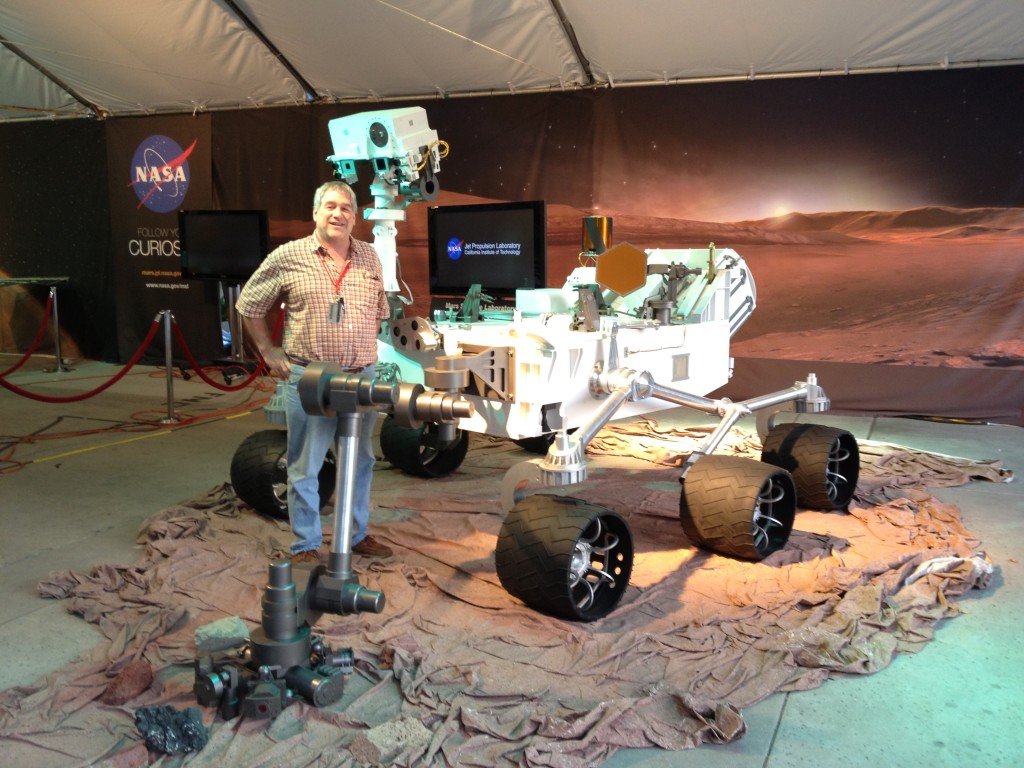The RRUFF Project - Raman Spectroscopy for Mineral Identification
Identifying minerals can be a daunting task, as it can be extremely hard to determine the identity of a specimen without subjecting it to damage. And, many methods (such as X-ray diffraction) are not only difficult and time-consuming to perform, they can also be inaccurate, which is why recent advances in the optimization of Raman spectroscopic techniques are so exciting!
Raman spectroscopy is a technique which is revolutionizing the field of mineral identification. It involves exposing minerals to a laser beam, which stimulates various atomic vibrations. The vibrating atoms scatter light from the laser, which is captured and analyzed via use of a spectrometer. The Raman spectra reflect the specimen’s vibrational behavior – providing insight regarding the material’s chemical and structural composition.
For a long time, Raman spectrometers were very costly, which drastically limited their availability. These days, the method has become more accessible, and technological improvements and advancements in miniaturization hold the potential for development of hand held devices, which could be used to quickly, accurately, and routinely identify naturally occurring compounds.

Following advancements made while working on a Raman spectrometer for NASA’s Mars rover, Dr. Robert Downs proposed a project which would include construction of a database, designed to catalog Raman spectra for all currently-known minerals. From this proposal arose the RRUFF project, which is currently hosted by University of Arizona.
The RRUFF Project website states that the project is “creating a complete set of high-quality spectral data from well characterized minerals, and is developing the technology to share this information with the world.” The catalogued data “provides a standard for mineralogists, geoscientists, gemologists and the general public for the identification of minerals both on earth and for planetary exploration.”
RRUFF is truly revolutionizing the field of mineral identification – and, as such, has gained incredible support for the project, uniting educational facilities and mineralogical societies worldwide, in an effort to maintain accessibility. The amount of cooperative support and collaboration alone marks this project as a unique and groundbreaking effort – not to mention the fact that it is largely operated and run by a group of approximately 30 students – most of whom are undergrads.
According to the IMA Database, to date RRUFF has cataloged data for around 5,000 unique species – with an emphasis on common gemstones and rock-forming minerals. All samples are closely scrutinized, and undergo an extremely thorough identification process, in order to ensure full characterization. Approximately 100 samples are processed each month – but the project is still seeking additional specimens required to complete the database.
We at iRocks are proud to support the RRUFF Project, and we hope you will be, too! For more information on how you can contribute, please review their list of unobtained samples, here – or explore the RRUFF Project website, for further details on applying for access to the database.
1 – RRUFF Website. http://rruff.info/about/about_general.php Accessed 05-20-2015.
2 – IMA Mineral Database. http://rruff.info/about/about_IMA_list.php Accessed 05-20-2015.
3 – Estrada, Charlene F. “Changing the Science of Mineralogy: The Use of Raman Spectroscopy in Mineral Identification and the RRUFF Project”, Outcrop: Newsletter of the Rocky Mountain Association of Geologists, Volume 55, No. 5 (May 2007). Accessed 05-20-2015.
